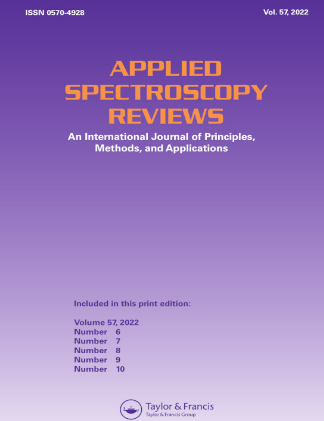表面辅助激光解吸电离质谱(SALDI-MS)解吸电离机理及信号增强
IF 5.4
2区 化学
Q1 INSTRUMENTS & INSTRUMENTATION
引用次数: 39
摘要
表面辅助激光解吸电离质谱法(SALDI-MS)与基质辅助激光解吸电离质谱法相比具有许多优点,已成为小分子和大非挥发性分子质量分析的重要技术之一。随着多孔硅和纳米材料等新型电离基底材料的发展,SALDI-MS在小分子分析中的应用越来越多。关于SALDI-MS的研究大多集中在开发新的衬底材料上,而对SALDI-MS电离机理的验证工作还不多。本文综述了SALDI-MS在解吸/电离机理、无机基质增强信号等方面的研究进展,以及新型高效基质的研究进展。在综述的电离机制中,激光烧蚀后产生激光诱导等离子体和激波被认为是SALDI-MS脱附和电离过程中更可信的机制,而其他机制也被认为有助于脱附和电离过程。综述了近年来纳米颗粒、纳米材料、金属有机骨架及其复合材料在SALDI-MS中应用的研究进展。本文章由计算机程序翻译,如有差异,请以英文原文为准。
Desorption and ionization mechanisms and signal enhancement in surface assisted laser desorption ionization mass spectrometry (SALDI-MS)
Abstract Surface assisted laser desorption ionization mass spectrometry (SALDI-MS) has been recognized as one of the prominent techniques in mass analysis of small molecules as well as large nonvolatile molecules since it bears many advantages compared to matrix assisted laser desorption ionization mass spectrometry. The use of SALDI-MS has been increasing for small molecules analysis with the development of new substrates materials for ionization such as porous silicons and nanomaterials. While most of researches about SALDI-MS are focusing on the development of new substrate materials, not much of works has been done for the verification of ionization mechanism of SALDI-MS. In this article, we reviewed the characteristics of SALDI-MS such as desorption/ionization mechanisms, signal enhancement by inorganic matrix, and recent trends on the development of new efficient matrix substrates. Among the reviewed ionization mechanisms, the laser ablation followed by generation of laser-induced plasma and shock wave is suggested to be more plausible mechanism in the desorption and ionization process of SALDI-MS, while other mechanisms are also recognized to contributes to the desorption and ionization process. Recent development of efficient substrate materials for SALDI-MS by adopting nanoparticles, nanomaterials, metal organic frameworks, and their combination was also reviewed.
求助全文
通过发布文献求助,成功后即可免费获取论文全文。
去求助
来源期刊

Applied Spectroscopy Reviews
工程技术-光谱学
CiteScore
13.80
自引率
1.60%
发文量
23
审稿时长
1 months
期刊介绍:
Applied Spectroscopy Reviews provides the latest information on the principles, methods, and applications of all the diverse branches of spectroscopy, from X-ray, infrared, Raman, atomic absorption, and ESR to microwave, mass, NQR, NMR, and ICP. This international, single-source journal presents discussions that relate physical concepts to chemical applications for chemists, physicists, and other scientists using spectroscopic techniques.
 求助内容:
求助内容: 应助结果提醒方式:
应助结果提醒方式:


